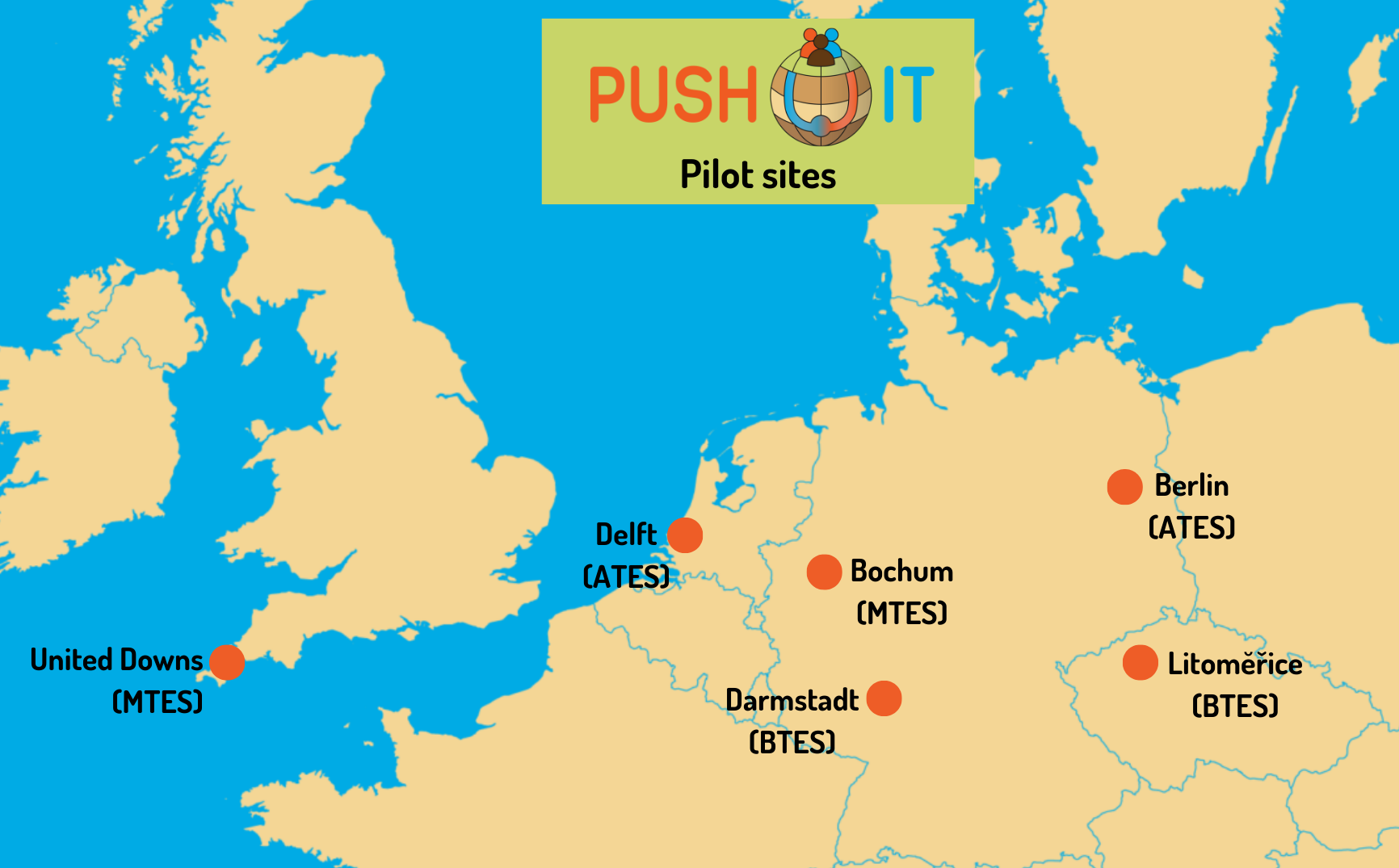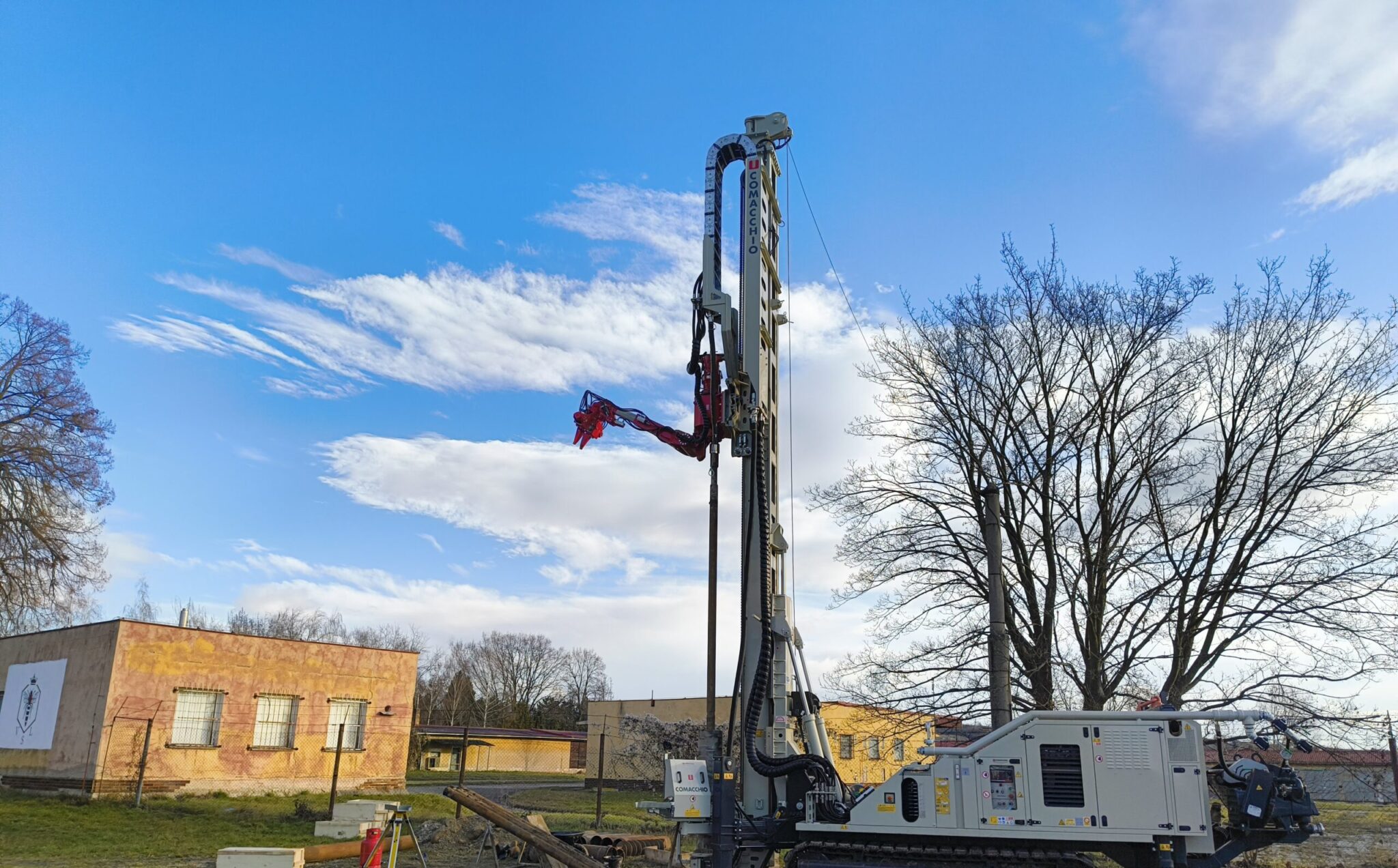As part of our ongoing series highlighting synergies with fellow Horizon Europe initiatives, we spoke with the team behind the PUSH-IT project (Piloting Underground Storage of Heat In geoThermal reservoirs). Here’s what they shared about their mission, innovations, and the role of geothermal energy in advancing industrial decarbonisation.
What is the scope and the goals of the PUSH-IT project? Highlight the innovative approaches.
The ambition of the PUSH-IT project is to overcome the seasonal mismatch between sustainable heat generation and heat demand by using Underground Thermal Energy Storage (UTES). The project focuses on three innovative high-temperature storage technologies, as well as enabling technologies, societal engagement, and governance, policies, and business models.
The goal is to develop this crucial but missing link in heat networks into a safe, reliable, affordable, and economically viable solution that aligns with current and future regulatory frameworks. This will contribute significantly to reducing greenhouse gas emissions and achieving a net-zero carbon economy and society in Europe by 2050.
What sets PUSH-IT apart is its broad and integrated approach. Rather than focusing solely on implementing individual demonstration sites, the project also invests in universal research applicable across Europe. This is structured around three main pillars:
- Enabling technologies: These include simulation tools, control systems, and standardised testing procedures that can be applied to any future UTES project.
- Governance and policy: We assess current regulations across participating countries and identify the changes needed to ease and accelerate the implementation of UTES.
- Societal engagement: Through stakeholder involvement and public outreach, we aim to raise awareness and build support for thermal energy storage solutions.
What is the geographical scope of the PUSH-IT project demonstration sites?
PUSH-IT operates at demonstration sites in four countries:
- United Kingdom – United Downs
- Netherlands – Delft
- Germany – Bochum, Darmstadt, and Berlin
- Czech Republic – Litoměřice
In your opinion, what is the biggest challenge for European or even world wide upscaling of TES?
The two biggest barriers are regulatory complexity and limited societal awareness.
While the technical development of UTES systems is advancing, implementation remains difficult in many countries due to unclear or overly complex regulations. In some cases, legal frameworks for UTES simply don’t exist yet.
Societal awareness is another key hurdle. Most people are still unfamiliar with the concept and potential of UTES. As a result, there is limited demand, fewer investment opportunities, and slower policy development to support broader adoption.
What is the importance of collaboration in this field? Highlight social aspects.
Collaboration is essential. No single project can cover everything – from technology development to public engagement. Working together allows us to maximize our impact, share tools and insights, and accelerate progress.
From a societal perspective, collaboration enables wider outreach, helping to inform stakeholders, policymakers, and the public across countries. It also ensures that enabling technologies developed by one project can be reused or adapted by others, paving the way for faster, more cost-effective deployment of thermal energy storage solutions.


